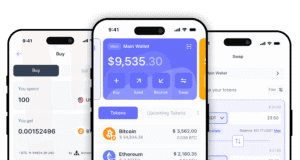The Airdrop Phenomenon
A recent report by WolvesDAO examines the curious phenomenon of airdrops in Web3. Initially marketed as rewards for early adopters, a “thank you” for believing in projects, airdrops have evolved into digital incentives designed to drive specific user behaviors.
The mechanics are straightforward: follow on Twitter, join Discord, complete tasks, retweet content, and receive tokens in return. Think of airdrops as blockchain-enabled loyalty programs, combining elements of coupons and airline miles with crypto speculation.
The Uniswap Turning Point
The 2020 Uniswap airdrop is often cited as the watershed moment. Users received tokens simply for having used the platform, creating an impression of fairness and democratized access. This sparked a wave of imitators:
- Blur: NFT marketplace with aggressive airdrop campaigns
- Arbitrum: Layer 2 scaling solution distribution
- Blast: Yield-focused Layer 2 platform
These projects attempted to recreate Uniswap’s success, but the results revealed a pattern: short-term engagement spikes that failed to translate into sustained loyalty once token distributions ended.
The Psychology Behind Airdrops
Beneath the surface, airdrops represent a masterclass in behavioral psychology, tapping into fundamental human motivations:
Key Psychological Triggers
- Variable Rewards: Uncertainty about airdrop value creates anticipation similar to loot boxes
- FOMO (Fear of Missing Out): Limited-time opportunities drive urgency
- Gamification: Task completion provides dopamine hits
- Wealth Effect: Token distribution creates disposable capital for further engagement
Jihoz, co-founder of Axie Infinity, noted that early token drops created a “wealth effect,” giving users disposable funds that fueled continued participation. The key insight: it’s about the perception of reward rather than actual value delivered.
When Tokens Eclipse Products
The critical danger emerges when token distribution becomes more important than the underlying product. This inversion creates several problems:
Community Transformation
- Marketing Over Mission: Communities shift focus from product value to promotional activities
- Mercenary Users: Participants chase payouts rather than supporting long-term vision
- Shallow Engagement: Task completion replaces genuine product usage
- Retention Collapse: User exodus when incentives dry up
Case Study: Blur’s Trajectory
Blur exemplifies the airdrop dilemma. During active distribution periods, the platform experienced massive trading volumes. However, once rewards concluded, activity dropped dramatically. This pattern highlights how incentive-driven participation fails without underlying product value or authentic community bonds.
Sustainable Alternatives
Airdrops aren’t inherently problematic. When designed thoughtfully, they can align rewards with meaningful contributions and foster genuine engagement rather than extractive behavior.
Discovery-Based Incentives
Some projects are experimenting with alternative approaches. Planet X, for example, implements discovery-based incentives where exploration and interaction provide intrinsic rewards beyond simple token payouts. This model emphasizes:
- Identity Formation: Users develop connection to platform identity
- Curiosity Satisfaction: Exploration rewards beyond financial gain
- Sustained Participation: Ongoing engagement mechanisms rather than one-time distributions
- Community Purpose: Shared goals beyond speculation
The Path Forward
The future of Web3 engagement likely depends on shifting focus from speculative rewards to experience-driven participation. Key principles for sustainable growth:
Building Lasting Communities
- Shared Purpose: Unite users around mission rather than profit
- Product Value First: Ensure underlying utility justifies participation
- Long-term Thinking: Design incentives that reward sustained contribution
- Authentic Engagement: Measure meaningful interactions, not vanity metrics
Current State Assessment
Until the industry embraces experience-driven models over financial extraction, airdrops will likely remain digital incentives that generate significant noise but rarely cultivate deep, lasting loyalty. The pattern is clear:
- Launch Phase: Massive hype and user influx
- Distribution Period: Elevated engagement and metrics
- Post-Airdrop: Dramatic user exodus and activity collapse
- Long-term: Small core community remains if product delivers value
Airdrops represent a double-edged sword in Web3 gaming. They effectively drive short-term participation and create viral growth, but their reliance on financial incentives over intrinsic product value creates fragile communities prone to collapse once rewards cease.
The question isn’t whether airdrops work—they clearly generate initial engagement. The question is whether projects can transition airdrop participants into genuine users who value the product independent of token rewards. Evidence suggests most cannot make this transition successfully.
For developers, the challenge is clear: build products compelling enough that users stay after the tokens stop flowing. For users, the calculus is simple: participate in airdrops if you enjoy the speculation, but don’t mistake token distribution for genuine community or product value.
The projects that will survive the current hype cycle are those building meaningful experiences first and using tokens to enhance rather than replace product value. Until then, approach airdrops with clear eyes—they’re sophisticated loyalty programs designed to extract engagement, not revolutionary wealth distribution mechanisms.





